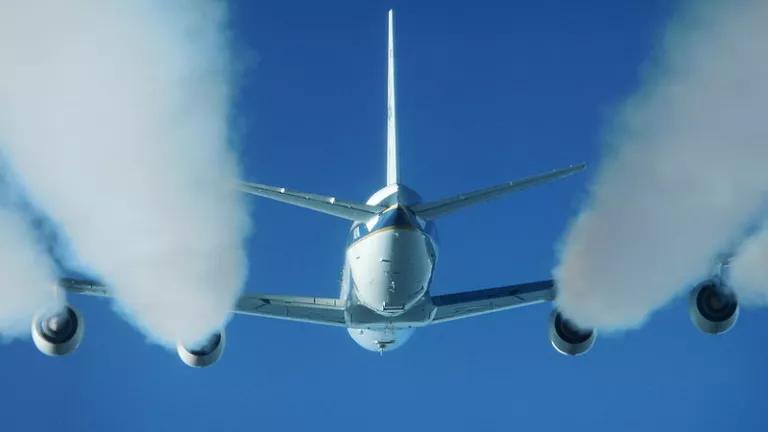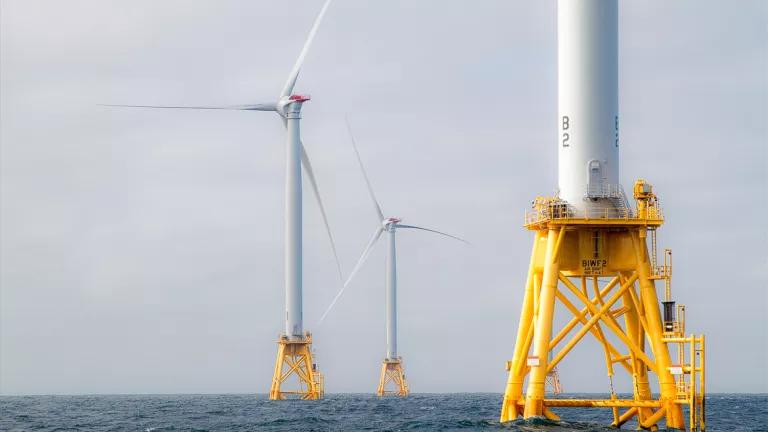China a Key Player in Aviation Emissions Agreement

China and the U.S. have put climate issues back into renewed focus by formally approving the Paris Climate agreement at the onset of the G20 summit this month. In several weeks, these two countries will have another opportunity to demonstrate climate leadership, this time by taking a stand against the growing carbon emissions from the aviation industry. From September 27th to October 7th, the International Civil Aviation Organization (ICAO), a UN agency, is meeting in Montreal to vote on an agreement to work towards “carbon neutral growth” in aviation post-2020. Because real aviation emissions are expected to rise dramatically in the coming decades, the ICAO hopes to achieve “neutral growth” through carbon offsets in a global market-based measure (GMBM). Previous attempts to address the environmental impacts of aviation have been stymied by a lack of international cooperation. For a meaningful ICAO agreement to be passed this fall, broad support will be required from the international community, especially from China, the nation with the fastest growing aviation sector.
What Is at Stake?
If global aviation was a country, it would have the 7th highest carbon emissions in the world. Aviation is currently responsible for 2% of global emissions and at least 4.9% of anthropogenic radiative forcing (a global warming impact measurement), but if left unregulated, aviation emissions have been projected to account for as much as 22% of global emissions by 2050. This is similar to global shipping, an industry of particular concern to NRDC, which accounts for nearly 3% of global emissions and is projected to account for 17% in 2050 if unregulated. Despite the threat that aviation poses to international climate efforts, aviation emissions were not formally addressed in the 2015 Paris conference, in part due to the difficulty of assigning responsibility to countries for the emissions of international flights, where often a flagship airline carrier from one country can fly routes from a second country to a third.
Aviation is projected to have an “emissions gap” of 7.8 billion tons of carbon pollution in excess of its carbon neutral goal between 2020 and 2040. Unfortunately, emission reduction strategies such as fuel efficiency and operational improvements will only make a small dent in this gap and viable sustainable biofuel still remains in its infancy. Instead, a GMBM that would require airlines to pay for carbon offsets, though controversial, may be the most politically feasible strategy for the aviation industry to address its growing fossil fuel consumption.
In China, the extraordinary growth of domestic aviation threatens to derail its own national climate goals. China pledged in the US-China Joint Announcement on Climate Change to peak its carbon emissions and raise non-fossil energy to 20% of its primary energy portfolio by 2030. Though China’s emissions growth has already begun to slow, projections of China’s aviation industry indicate that its aviation emissions will necessarily represent a climate challenge. By 2029, China’s domestic passenger aviation market is expected to be the largest in the world, surpassing the U.S., and by 2034, China is projected to have 1.196 billion passengers per year, up from 438 million in 2014. By 2050, aviation fossil-fuel use will have risen to 15.7%, up from 7.3%, of the total energy consumption in China’s transport sector. The scope of China’s projected aviation market makes China an essential player in any global effort to control aviation emissions.
The Fraught Journey of Emissions Trading in Aviation
Since the signing of the Kyoto Protocol in 1997, the ICAO has been tasked with regulating international flight emissions. However, it was not until the EU included aviation emissions in its emissions trading scheme (ETS) in 2012 that the ICAO was finally pressured to push for a global unified aviation emissions regulation system. Russia, the U.S., India, and China all opposed the EU’s unilateral action as the EU ETS would cover flag carriers from outside the EU flying in or out of EU territory. China threatened to block all contracts for Airbus purchases, and instructed its carriers to not comply with the EU ETS, as did the U.S. and India.
Faced with an impending trade war, at its 37th general assembly in 2013, the ICAO declared that it would use the next three years to establish a GMBM to regulate aviation emissions to be implemented in 2020. Negotiations on the specifics of this plan, however, have been mired in debate. As with other international environmental agreements, at the center of discussion is the question of how to pursue a regulation scheme that follows the spirit of the “common but differentiated responsibilities” (CBDR) principle first set forth at the United Nations Conference on Environment and Development (UNCED) in Rio de Janeiro in 1992. The aviation industry’s goal to achieve carbon neutral growth post-2020 necessarily creates a tension between nations with large, fully developed aviation markets (such as the U.S. and the EU) and nations with rapidly emerging aviation markets (such as China, Brazil, India).
There are a number of ICAO GMBM plans under consideration, and depending upon which one gets implemented, different nations could bear significantly different burdens in offsetting emissions growth. Under a 100% “individual” offset scheme, airlines would be responsible only for growth in their own emissions. With this scheme, the aviation industry in the U.S. and EU would only need to offset the minimal growth in emissions of their already saturated aviation market, while emerging aviation markets, like China’s, would face a significant offsetting burden. Under a 100% sectoral scheme, favored by China and other developing nations, airlines would pay for carbon offsets for a proportion of the emissions growth of the entire international industry.
As the 2016 ICAO General Assembly approaches, much of the discussion on the ICAO agreement has been focused on the timing of how the ICAO GMBM would be rolled out. The most recent ICAO proposal has divided its GMBM implementation into three phases:
- From 2021 to 2023, countries would have the option to opt into a pilot ETS program, where airlines would be responsible for a proportion of sectoral emissions growth based on either their 2016 or 2020 emissions.
- This pilot phase will be followed by the first “voluntary” phase from 2023-2026, ideally with more countries joining in, where offsets would be calculated on a 100% voluntary basis.
- From 2027 onward, all but the poorest nations would be required to participate, with offset responsibilities transitioning from a sectoral scheme towards an individual airline scheme.
China a Receptive Partner?
Despite its previous resistance to the EU’s ETS scheme, China has been very active in ICAO negotiations, putting forward proposals of its own, thereby raising optimism around China’s potential participation going forward. China’s positive engagement with the proposed international aviation GMBM may reflect its own increasing willingness to use market-based measures to tackle its own domestic environmental problems.
Starting in 2013, China established seven pilot ETS plans in five cities and two provinces. Through the end of June 2016, a cumulative 94 million tons of carbon have been traded in the pilot secondary markets, (worth approximately $349 million USD). In two of these pilot ETS programs in Shanghai and Guangdong, emissions from aviation are partially covered, including emissions from airports and two airlines in Guangdong (source in Chinese) and six airlines in Shanghai.
China will begin implementing a national ETS program starting in 2017, with an expected emissions cap size that will be twice that of the EU. Aviation will be one of the eight sectors covered in the national system. It is important to note that, in line with China’s climate commitments, China’s carbon emissions cap will be based on its carbon intensity reduction targets, and not necessarily total emission reduction targets. It will be of interest, then, to see how China’s coverage of domestic aviation emissions under its national ETS will correlate with an ICAO GMBM if one is adopted.
Lastly, as the world’s largest host of Clean Development Mechanism (CDM) projects (emission offsets that can be traded under the Kyoto Protocol), China will be pushing to be able to use as many of its own carbon offset credits as possible in the upcoming ICAO GMBM. However, as discussed below, it will be crucial that only the highest quality carbon offset credits be permissible for use in this scheme.
Striving for Real Progress
It is critical to remember that an ICAO GMBM plan can, at best, only offset the growth of aviation emissions. Carbon offsets have long been a controversial concept, and it should not be a surprise that over 80 environmental NGOs are opposed to an ICAO deal as “a distraction from real emission reductions.” However, a recent WWF/Stockholm Environmental Institute study has shown that enough “high quality” offsets (meeting the principles of additionality, permanence, and minimal leakage) exist to nearly satisfy the projected ICAO offset demand.
Unfortunately, China may be inclined to oppose any language in the upcoming ICAO agreement that places restrictions on which offsets are available for use under a GMBM. This is because of the fact that of the more than 50 million tons of carbon emission offsets that have been issued in China (source in Chinese), only a fraction of them, such as small hydroelectric and solar projects, would qualify as “medium quality” offsets under the WWF/Stockholm Environmental Institute study, while almost none of them would qualify as “high quality” offsets, which currently only include landfill gas and methane avoidance projects. (See the WWF’s categorization of offsets here). The rest of China’s offsets, which mainly include wind power projects, rural methane use projects, and large hydroelectric and solar projects, would be considered “low quality” offsets, likely because they would not meet the requirement of “additionality.”
Regardless of how offsets from any single country are treated, it is essential that the ICAO agreement adopt the strongest language possible regarding the quality of allowed carbon offsets, otherwise this agreement may be counterproductive.
Already this year, the ICAO has produced weak environmental regulations. In February 2016, the ICAO passed a binding CO2 efficiency standard, which will not come into effect until 2028, at which point most airlines will have likely already improved their fuel efficiency beyond the ICAO standard.
Lastly, for the ICAO agreement to be effective, it is essential that there is maximum participation in the GMBM plan as early as possible. If the participation of developing nations in the ICAO’s GMBM plan is delayed, an estimated 30 to 50% of aviation emissions will not be covered during the first phases, reducing the credibility of the “neutral growth” emissions standard put forth by the aviation industry. There is good news, however, on this front. On September 3rd, China announced its willingness to be an “early participant” in the voluntary phase of the current ICAO plan. This move will hopefully put pressure on India and other nations with developing aviation markets to participate in the ICAO GMBM in the early voluntary phases.
Controlling aviation emissions is an important step in averting disastrous climate change. The upcoming ICAO meeting is a critically important opportunity to take truly meaningful action.
This post was co-authored by NRDC Princeton in Asia Fellow Noah Lerner.




